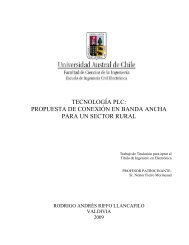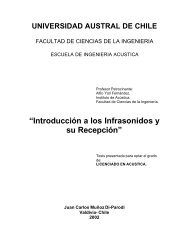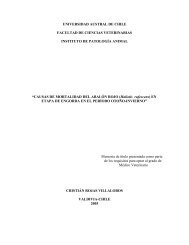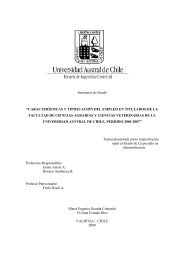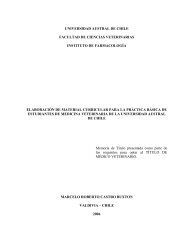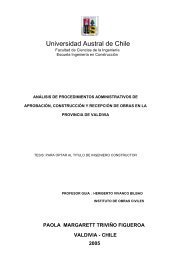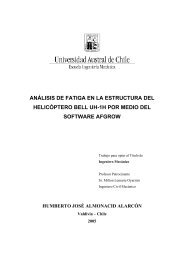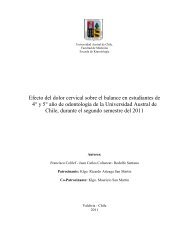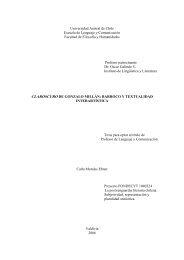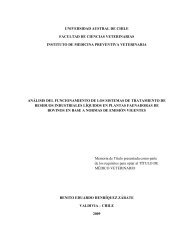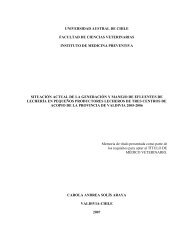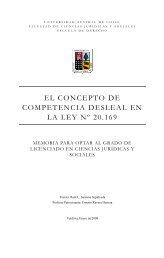sistema show control - Tesis Electrónicas UACh - Universidad ...
sistema show control - Tesis Electrónicas UACh - Universidad ...
sistema show control - Tesis Electrónicas UACh - Universidad ...
Create successful ePaper yourself
Turn your PDF publications into a flip-book with our unique Google optimized e-Paper software.
Decimal points should be separated by at least one digit, but Controlled Devices should<br />
accommodate the error of sending two or more decimal points together. Any number of decimal<br />
point delineated subsections may be used and any number of digits may be used in each<br />
subsection except that the length of the data must not cause the total length of the MIDI Show<br />
Control message to exceed 128 bytes.<br />
Controlled Devices which do not support Q_list and (or Q_path) data must detect the 00H byte<br />
immediately after the Q_number (or Q_list) data and then discard all data until F7H is detected.<br />
Likewise, Controlled Devices which do not support the received number of decimal point<br />
delineated subsections, the received number of digits in a subsection or the total number of<br />
received characters in any field must handle the data received in a predictable and logical<br />
manner.<br />
Controlled Devices which support Q_list and/or Q_path will normally default to the current or<br />
base Q_list and Q_path if these fields are not sent with Q_number.<br />
For lighting applications, Q_list optionally defines the Playback or Submaster Controls (0 to 127)<br />
with which the cue corresponds.<br />
It is highly recommended that every manufacturer publish a clear and concise description of their<br />
equipment's response to the above conditions.<br />
3.2. TIME CODE NUMBERS<br />
Since data often contain some form of time reference, a "Standard" specification for transmission<br />
of time provides consistency and saves space in the data descriptions.<br />
MIDI Show Control time code and user bit specifications are entirely consistent with the formats<br />
used by MIDI Time Code and MIDI Cueing and are identical to the Standard Time Code format<br />
proposed in MIDI Machine Control 0.05. Some extra flags have been added, but are defined such<br />
that if used in the MIDI Time Code/Cueing environment they would always be reset to zero, and<br />
so are completely transparent.<br />
3.2.1. STANDARD TIME CODE (types {ff} and {st}):<br />
This is the "full" form of the Time Code specification, and always contains exactly 5 bytes of<br />
data.<br />
Two forms of Time Code subframe data are defined:<br />
The first (labelled {ff}), contains subframe data exactly as described in the MIDI Cueing<br />
specification i.e. fractional frames measured in 1/100 frame units.<br />
The second form (labelled {st}) substitutes time code "status" data in place of subframes. For<br />
example, when reading data from tape, it is useful to know whether these are real time code data,<br />
or simply time data updated by tachometer pulses during a high speed wind. In this case, as in<br />
other cases of "moving" time code, subframe data are practically useless, being difficult both to<br />
obtain and to transmit in a timely fashion.<br />
hr mn sc fr (ff|st)<br />
hr = Hours and type: 0 tt hhhhh<br />
tt = time type (bit format):<br />
00 = 24 frame<br />
01 = 25 frame<br />
A3-6



